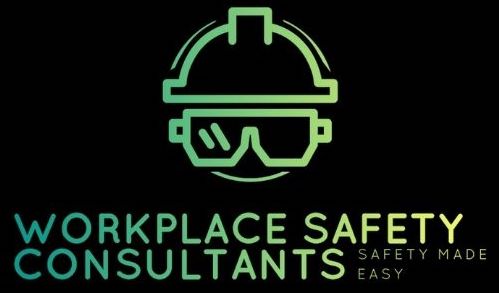If you have been tasked with the job of setting up a new workplace safety committee, there are a number of steps you can take to ensure the committee you create is a well-run entity that is capable of devising and implementing effective new safety protocols. In this blog post, we’re going to cover everything you need to know to succeed: we’ll share our specialist knowledge and experience with you, along with our top tips and best practices.
Follow Our Top Tips to Make Your Safety Committee Thrive
Follow the tips below and your safety committee will be able to make great strides in terms of safety improvements across all of your company’s properties and sites:
- Create Clear Definitions of Primary Goals – As with every other endeavour in business, there is little chance of success when building a new workplace safety committee if you do not clearly define all of your primary goals at the very start. Only once every member of the committee has a crystal clear vision of what you are trying to achieve can you expect the committee to function effectively and productively, like a well-oiled machine.
If you encounter any difficulties when trying to put together a comprehensive list of goals or you are simply looking for a little inspiration, we recommend that you start with the most obvious ones: the type of safety goals that companies in all industries and market sectors are keen to achieve, such as a reduction in the number of accidents in the workplace, encouraging all employees to become more aware of the safety issues they must tackle daily and improving emergency response times (this last suggestion is only relevant if you have an onsite medical, fire or general accident response team). - Elect a Chairman and Permanent Committee Members – A workplace safety committee can only really come together and start functioning effectively when every member has been chosen or elected and the first meeting is called to order. When choosing general members for your workplace safety committee, you should try to ensure that you do not choose any members who may cause unnecessary friction or make life difficult for other members in any way. In other words, you should avoid the temptation to focus on capabilities and prior knowledge at the expense of social and communication skills. Every member you choose should be able to function effectively in a team as well as when they are alone.
When selecting your first workplace safety committee chairman, we suggest that you pay particular attention to candidates who have already demonstrated strong leadership skills, together with the ability to listen whenever they consult experienced specialists. A good chairman should be able to lead from the front and motivate all other committee members, at the same time as paying close attention to the opinions of experts.

- Schedule Regular Meetings – This may sound like an obvious point to make, but our list of top tips to make your safety committee thrive would not be complete without this key suggestion. You might be surprised to learn that many workplace safety committees fall by the wayside due to a lack of enthusiasm when it comes to holding regular meetings. A committee that meets irregularly, with weeks or months in between meetings, has very little chance of acting cohesively or making significant progress in terms of moving towards the goals defined at the start.
To ensure that meetings are not cancelled or under-attended due to a lack of enthusiasm, your elected chairman needs to remain in contact with all committee members in-between scheduled get togethers. If, despite your best efforts, enthusiasm begins to wane, it may be a good idea to consider electing a few new members: people who are likely to bring new ideas and passion to the job of making safety improvements in the workplace. - Organise Safety Training Courses – In order to carry out their duties to the best of their abilities, each member of your new committee will need to receive training in various different safety disciplines. Whilst it is always a good idea to pick some members with previous experience in the field of workplace safety, it is, as we mentioned earlier, not the sole factor you should focus on when putting your committee together. Furthermore, it may well be the case that there are no true safety experts on the company’s books or, if there are, they may be at a remote location or otherwise unavailable.
In addition to professional safety courses, which may either take place in your offices or in the offices of the company that provide the instructors, you should make a special effort to make various learning resources available to your committee members on a permanent basis. You might like to consider building an onsite safety library that could prove to be a valuable resource, not just for workplace committee members, but for the whole workforce. - Perform Risk Assessments – The best way to identify hazards in the workplace is to perform risk assessments, which may either be focused on specific work tasks or on particular areas of your workplace. In both cases, we recommend that, in addition to soliciting the views of those employers who are regularly engaged in the work in question or who spend their days in the area you happen to be reviewing, you solicit the views of objective parties, including of course, your committee members. In this way, you will be able to benefit from experienced eyes as well as the opinions of individuals who can bring a fresh perspective to the matter under consideration.
There are many different types of risk assessments that you may wish to include in your programme, including qualitative, quantitative, generic, site-specific and dynamic. The last differs from the first four in as much as it is a type of risk assessment employed when facing new challenges or situations. As such, dynamic risk assessments are unlikely to form part of your initial programme. - Develop Core Safety Policies and Standard Operating Procedures – Your workplace safety committee is now ready to get down to the serious business of developing new safety policies and standard operating procedures and, once they have been thoroughly reviewed, implementing them on a site-wide basis. Assuming that these policies and procedures are developed with your primary objectives firmly in mind, and are adopted by all departments, you should now start to see some real progress towards those objectives. In other words, you will have finally reached a point where all your hard work starts to pay off in noticeable ways. In the event you do not see measurable results after the implementation of your new policies and procedures, you will need to call a meeting of your committee without delay. Once convened, your focus should be on an urgent review of the policies and procedures that your committee has introduced.
Even if you start to observe the measurable results you were hoping for, you should still conduct regular reviews to see if any further improvements can be made or whether new circumstances have made it necessary to adjust existing policies and procedures. - Promote Greater Awareness Among the General Workforce – Finally, at the same time as you are engaged in completing all of the above steps, your workplace safety committee should also be looking for ways to promote a greater awareness of safety issues across the entire workforce.
If you would like to discuss your plans with our work safety consultants in Perth or are interested in hearing more top tips to make your safety committee thrive, please feel free to contact us.

